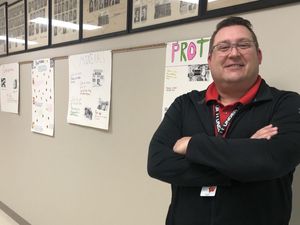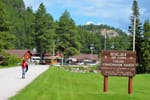Editors note: This is the first of two stories in Part 1 of a two-week special report in which South Dakota News Watch will examine the historical and current educational achievement gap between Native American and white students in South Dakota.
This week: An examination of the problem and its causes, and a glimpse inside a successful community program helping Native students achieve.
Next week: A look at reforms that could vastly improve Native education in South Dakota, and an examination of a proposal for Native-focused charter schools in S.D.
The South Dakota constitution demands that state government provide equal opportunity to education for all of its citizens, yet for decades Native Americans – who make up 9% of the population – have been left behind by a system that fails to meet their needs and has resulted in generations of Natives suffering the consequences of inadequate educational achievement.
The systematic failure to properly educate Native American students is seen as a major source of devastating later-in-life consequences that have plagued Native people and communities for decades: generational poverty, high unemployment, substance abuse, high incarceration rates and reduced life expectancy.
The latest results from both state and national standardized testing provide a window into just how dire the situation has become, as Native students continue to perform far worse than white students in South Dakota across almost all measures of academic achievement.
During the 2018-19 school year, less than one in four Native American students in grades three to eight and grade 11 was rated as proficient in reading and writing on state standardized tests. Roughly one in seven Native American students was proficient in math, and just one in eight was proficient in science. A separate test, the 2019 National Assessment of Educational progress, found that South Dakota’s Native American fourth and eighth graders were between 25 and 30 points behind their white peers in math and reading.
On-time graduation rates for Native American students also are lower than for every other racial group in the state at just 54%, compared with the rate of 85% for students of all backgrounds, according to the state report card. Some Native-dominated school systems in South Dakota suffer more than others, such as in McLaughlin, on the Standing Rock Indian Reservation, where too few of the system’s roughly 440 students scored proficient in any subject for statistics to be reported.
The reasons for the poor performance are varied and complex, but many educators and experts interviewed as part of a two-month reporting effort by South Dakota News Watch to examine Native education in the state agree that the problems are rooted in circumstances far outside a student’s control.
“I believe wholeheartedly that we are extremely intelligent, innovative people, but this system is not designed in a way that nurtures that,” said Sara Pierce, director of education equity at the West River nonprofit advocacy group NDN Collective.
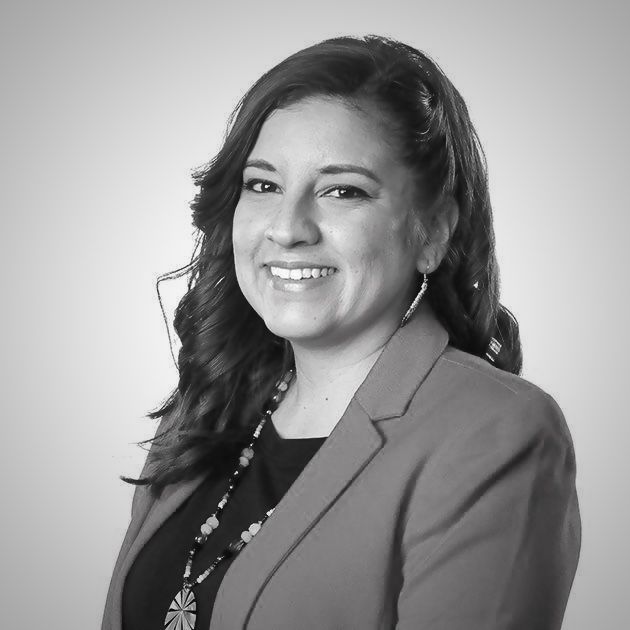
Pierce, a member of the Oglala Sioux Tribe who has worked in school systems in Omaha, Neb., and Rapid City, said the state’s schools have struggled to teach Native students in a way that is relevant and responsive to the culture in which they grew up. There also are relatively few Native American teachers in public school districts, which reduces emotional and educational connections and relationships, she said.
The number of different school systems serving Native American students can also be a problem, said Juliana White Bull-Taken Alive, director of the state Office of Indian Education.
Each system has its own set of rules, philosophies and goals, she said. The lack of consistency hurts Native students, who tend to be more mobile than their peers and often hop between school systems one or more times before they graduate. Students in the Oglala Lakota County School District, for example, endure a built-in disruption to their educational path when they reach high school because there has not been a traditional high school in Pine Ridge for decades. Students must move to a virtual school online or transfer to a federal Bureau of Indian Affairs or private school on or near the Pine Ridge Indian Reservation in order to stay on track to graduate.
“Over the years, as an administrator working for the tribal departments and now for the state, I’ve seen that the biggest challenge in terms of our students, ultimately, is building consensus among our schools in the state,” White Bull-Taken Alive said.
Native students also have the long, traumatic history of their peoples treatment at the hands of the federal government to contend with, both Pierce and White Bull-Taken Alive said.
They are hampered as well by the most recognizable consequence of that traumatic history – a deep cycle of poverty that persists in tribal communities to this day. In South Dakota, roughly 60% of Native American children were considered to live in poverty in 2018, according to the Annie E. Casey Foundation’s annual Kids Count report. Only 8% of South Dakota white children were living in poverty that year, the report said.
Numerous studies show that people of any race who come from a low-income background are more likely to struggle in school. Impoverished students tend to have smaller vocabularies and are less likely to attend school regularly and graduate high school on time.
Poverty also tends to be self-replicating. According to the National Center for Children in Poverty, 82% of children whose parents didn’t have a high school diploma were living in low-income families. Thus, they were less likely to graduate high school themselves. Data also show a strong link between low educational attainment and high rates of substance abuse and incarceration, both of which make finding a way out of poverty more difficult.
Most schools in South Dakota do not have many, if any, Native American teachers, which reduces the ability of Native students to make strong connections with adults in schools. Research has shown that having even one minority teacher in a school can boost learning for all students in that minority group.
School districts where Native Americans make up the majority of the student body also tend to be in remote, rural areas, said Julie Garreau, director of the Cheyenne River Youth Project and a member of the Cheyenne River Sioux Tribe. The youth project is a nonprofit that provides a variety of after-school programs and services to children in Eagle Butte on the Cheyenne River Indian Reservation in north-central South Dakota.
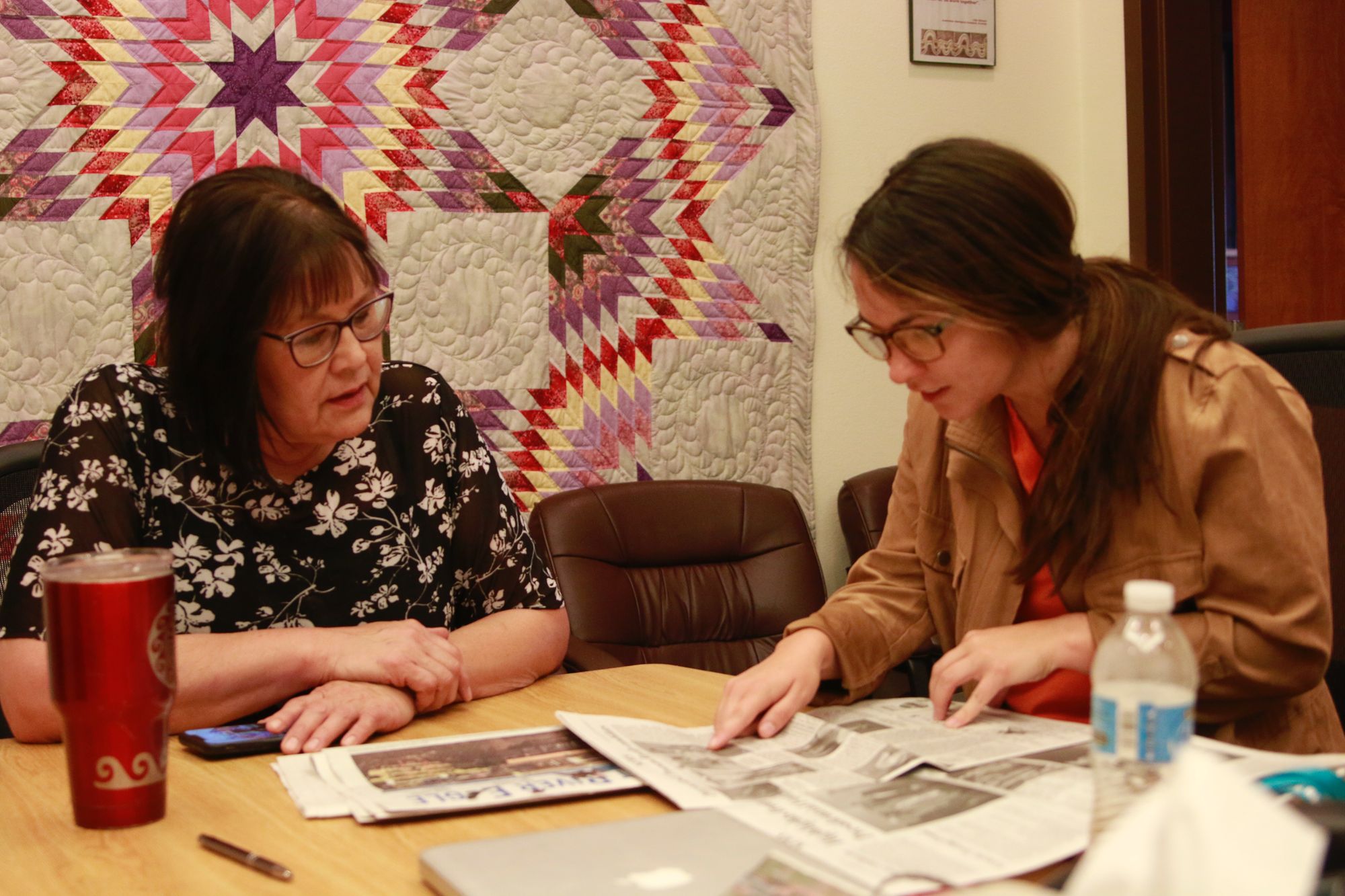
Some rural districts do not have access to the same educational programs or job-training opportunities found in more urban districts such as Sioux Falls and Rapid City or even Aberdeen and Pierre. Transportation costs and time, teacher hiring and retention challenges, and restricted funding can also hamper rural districts where Natives commonly attend.
Furthermore, a lack of post-graduation options in small communities where Native populations reside can indirectly hold students back. If students who are trying to figure out what they want to do after finishing high school – whether it’s finding a job, going to tech school or college or joining the military – don’t see realistic opportunities ahead, they can be prone to giving up on school and perhaps turning to substances for solace, Garreau said.
“Kids are growing, they have a need to learn, they have a need to be active and to do things, and if that’s not there, I think any child will find something else to do,” Garreau said. “And sometimes that’s a negative activity.”
South Dakota’s Native American population is not unique in facing challenges to getting a good education. Indigenous people across the country are struggling to close school-success gaps. In North Dakota, the graduation rate for Native American students was 72%, 20 points lower than that state’s white students. In Montana, Native American fourth and eighth graders were 20 to 30 points behind their white peers on the 2019 national assessment tests. The Native student populations in Montana and North Dakota make up roughly the same percentage of the overall student population as in South Dakota.
In South Dakota, there is new hope on the horizon. More school districts across the state have begun to implement pieces of the Oceti Sakowin Essential Understandings, a set of educational standards that seek to encourage schools to incorporate Lakota language, culture and history into everyday lessons. Lakota-language classes have been popping up in schools around the state, as well. In majority-Native districts such as Oglala Lakota County, teachers have started Lakota Immersion classrooms, which teach all their lessons in the Lakota language.
More than anything, schools are reaching out to Native communities, often for the first time, to find out what they want and need from schools, White Bull-Taken Alive said.
“For so many years, everyone came in and told us how we were going to educate our kids,” she said. “It’s only now that Native American people have begun to stand up and say, ‘Hey, we want to teach our own kids.’”
Last month, Department of Education Secretary Ben Jones announced the formation of a partnership with education-consulting firm McREL International to design and implement programs to improve Native American educational outcomes in the state. Those efforts, he said, could include a new look at culturally relevant curricula and efforts to improve Native American teacher recruitment.
A push is also underway by the NDN Collective and other Native groups to pass legislation in 2020 to allow for development of the state’s first public charter schools that would provide educators the flexibility to innovate to better reach and teach Native students.
The complexity and magnitude of the challenge facing South Dakota’s Native American students certainly has created hurdles, but also provides a tremendous opportunity, Pierce said.
“In South Dakota we are ground zero for indigenous education mobility,” she said.
Because there is so much room to grow, even incremental improvements to graduation rates, employment rates and college attendance could make a big impact on Native communities, both financially and socially, Pierce said. After all, economic fortunes have been shown to improve as educational attainment increases, she said.
“There are huge financial implications to our communities as a result of this. That [financial impact] goes for reservations and urban areas in our state,” Pierce said.
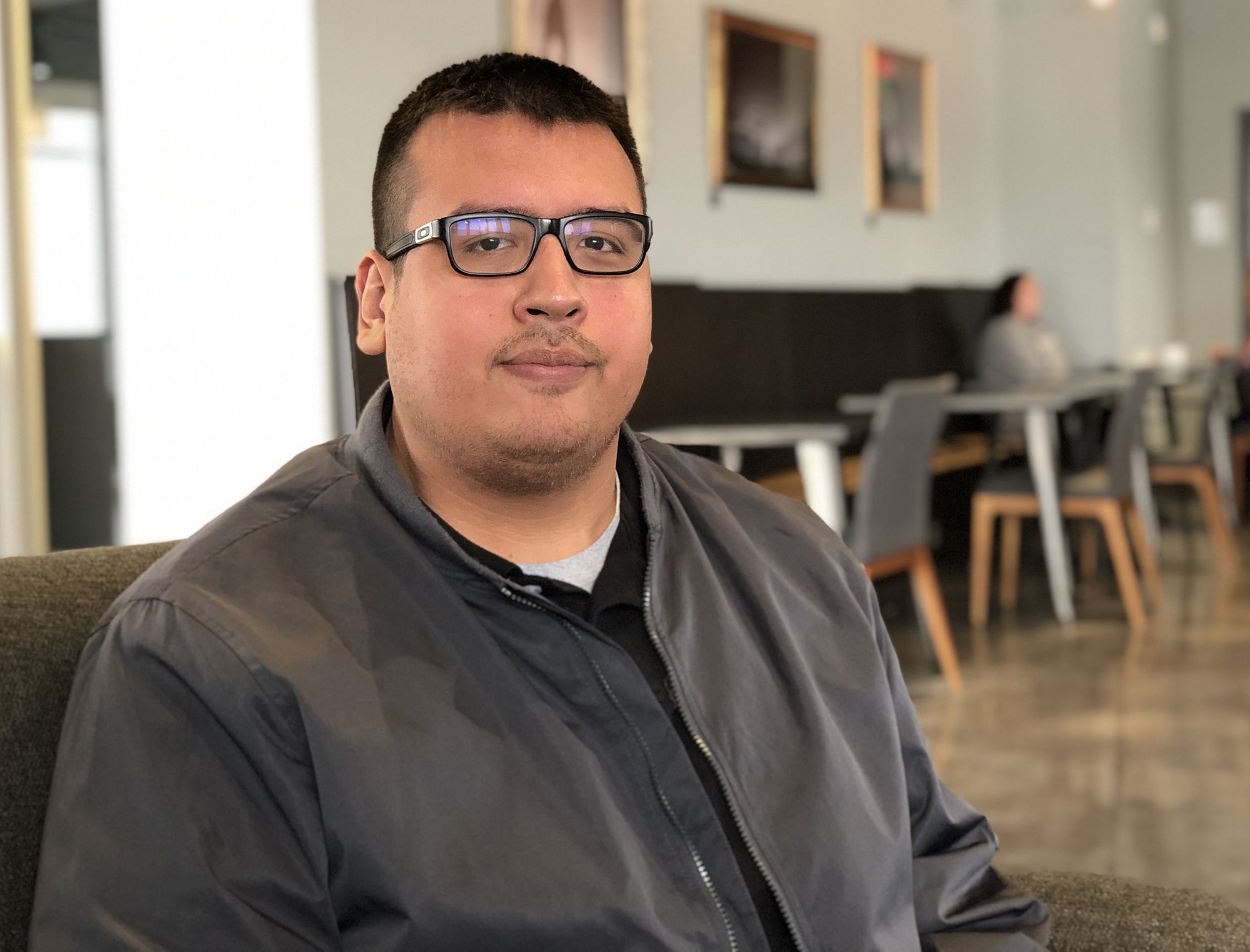
Enduring generations of trauma
As a high school freshman in Wagner about a decade ago, on the Yankton Indian Reservation in southeastern South Dakota, Alexander “Zane” Zephier found going to school nearly impossible.
He lived with his grandmother and younger brother and sister. Zephier’s mother, suffering from addiction and substance-abuse disorders, had left the family. His father was in prison. Zephier, a member of the Yankton Sioux Tribe, had bounced between schools in the towns of Lake Andes and Marty before going to Wagner in time to start sixth grade.
When Zephier started high school, skipping class to stay home and play video games was easier than dealing with school on top of the other hardships in his life. Good grades didn’t seem to matter too much in the grand scheme of things. Zephier said he had no idea where he was going after high school.
Trying to process the reality of his mother’s departure and his father’s absence wasn’t easy. He found it difficult to connect with other students and instead withdrew into himself. Eventually, Zephier did find some friends that came from similar circumstances and started drinking with them. The booze was in his community, unfortunately, a readily available coping mechanism, Zephier said.
By the time his grandmother started getting phone calls from the school threatening charges of truancy, Zephier said, he’d gotten so far behind that going back to class seemed impossible.
“It was just kind of a vicious cycle,” Zephier said.
Zephier’s struggles are common in tribal communities. Native American students have the lowest attendance rate of any racial group in South Dakota at 72%, according to the DOE report card. Native children also have the highest rate of chronic absenteeism of any racial group in the state at 37%.
While many factors play into whether any child, indigenous or not, will show up at school every day, Native communities have the added burden of a long history of historical, cultural and societal trauma. Zephier’s story is one example of the impact such historical trauma can have on Native students.
No other group of Americans has as troubled a past with government-funded education than the country’s indigenous population. In 1819 Congress passed the Civilization Fund Act, which appropriated $10,000 (about $202,000 in today’s dollars) to teach Native Americans “the habits and arts of civilization.” The money was mostly allocated to religious groups to fund mission schools on the country’s frontier.
By the 1870s, most of the country’s indigenous population had been conquered and forced onto remote reservations. That decade also saw the beginning of the federal government’s notorious Indian boarding-school program. Native American children were forced to attend federally funded boarding schools that systematically stripped them of their cultural identity through a combination of harsh discipline and forced religion.
Generations of Native youths as young as six were required, by law, to attend schools where their hair was cut, their clothes were replaced by military-style uniforms and they were denied the right to speak their own languages. School instructors routinely disciplined students physically and mentally for even minor infractions. Often, these schools were hundreds or thousands of miles away from their families.
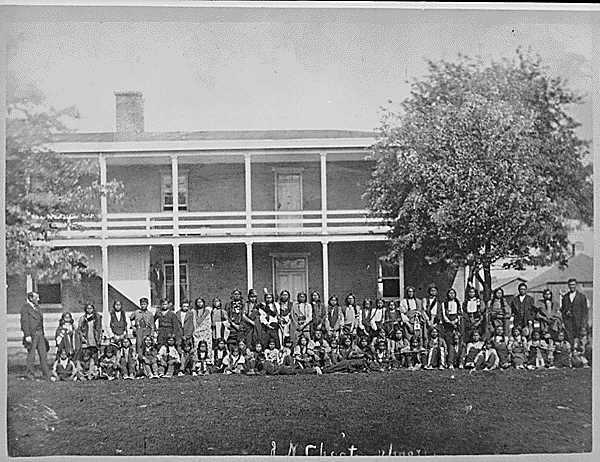
“In theory it was supposed to be this great tool for assimilation, and we would all coexist together. But what it really did was, it compromised indigenous culture in a way that we’re still repairing,” said Pierce.
The stated goal behind forced Indian education was, literally, to quash Native American culture under the notion that doing so would eventually lead Native Americans to assimilate into American society. Education at Indian boarding schools was usually trade-focused for boys and focused on domestic chores and skills for girls. Reading, writing and math were taught, too, but the idea was to give Native children practical skills that could lead to jobs in cities or in agriculture.
Racism often prevented former boarding-school students from finding work in American cities, Pierce said. Often, those former boarding-school students were driven back to the reservations where they came from and where opportunities were few.
“There weren’t industries on the reservation conducive to those trades, and so what happened then is, they go back to the reservations, and they would feel super isolated because they didn’t have deep understandings of their culture, language and spirituality,” Pierce said.
In the end, the federal system of boarding schools failed to erase Native culture or force Native Americans to assimilate. What the boarding schools did instead was create several generations of traumatized youths with tenuous connections to their culture, history and families. Many turned to alcohol as a way to self-medicate for serious mental health problems, Pierce said.
“If you’re using alcohol to adapt and address some deep mental health issues, and then you start having a family, getting married, having children, when your children misbehave or you and your spouse disagree, you address it in ways that you learned … the boarding-school movement really yielded chemical dependency, extreme mental health issues, abuse both physically and sexually. There’s just a long list of issues,” Pierce said.
Until the Indian Citizenship Act of 1924, Native Americans hadn’t been granted automatic citizenship at birth (though some Natives were able to become citizens.) The 14th Amendment to the U.S. Constitution, which grants nearly anyone born within the country’s borders citizenship, had been interpreted by Congress and the courts to exclude indigenous people. Native Americans were instead considered almost as wards of the state.
Those who had been granted citizenship and were born before 1924 had to give up their tribal affiliations, join the military and accept land grants carved out of reservation lands, and start paying taxes on the land. That system led to tribes’ losing hundreds of thousands of acres from reservations to private ownership. Often the lands were sold off to non-Native buyers.
Full citizenship wasn’t granted to all Native Americans until 1948. By the 1950s, nationally, about half of all Native American children were being educated in locally controlled public schools. But Native Americans still had little say in what and how their children were taught in those schools. The same was true of the federally managed BIA schools.
Beginning in the late 1960s, tribal governments started taking on a larger role in the education of their children. They began taking over boarding schools and creating new partnerships with local school districts using federal grants authorized by the Indian Self-Determination and Education Assistance Act of 1975, as well as the Tribally Controlled Grant Schools Act of 1988.
Forced placement in boarding schools wasn’t ended until 1978, when Congress passed the Indian Child Welfare Act.
Zephier, for his part, said he was able to graduate high school in 2013 and go to college thanks to the teachers and students in the Wagner High School Jobs for America’s Graduates program. He was automatically enrolled in the program as a freshman because the school deemed him to be at high risk of dropping out due to his family history. Zephier was joined by 12 other students, all of whom had similar backgrounds, in his JAG class.
With help from lead JAG teacher Renee Van Der Werff, who students saw as a mother figure, the class became a second family, Zephier said. His classmates became an essential support system and kept him connected to school even as he struggled with drinking. Ven Der Werff, meanwhile was able to provide individual help to Zephier and his fellow JAG students with school work and in completing applications for summer programs and even college.
Zephier couldn’t pinpoint exactly when he committed to breaking out of the cycle of poverty and substance abuse that had plagued his parents but he credits the stability he found in the JAG program for giving him the emotional space to think about his future and his siblings’ future.
“I constantly worried about the world they would grow up in when I was in high school. Those thoughts used to keep me awake at night and give me nightmares. I always thought to myself, ‘If I can’t make it out of here, how can I expect them to?’” Zephier said. “I also wanted to build a life that when I had my own family, my children would never have to know what it’s like to grow up without parents or any of the things I had to witness and endure in my upbringing.”
Zephier, now 24, graduated from the University of South Dakota in 2017 after having served in student government. Zephier now works as a field counselor for USD’s Upward Bound program, which helps low-income high school students graduate and explore college opportunities.
His brother and sister, though, have both struggled. Zephier said his sister dropped out of high school and his brother has been sent to a juvenile-detention facility. He hasn’t been able to speak with his brother or sister for a while, but he worries about them constantly and hopes they’ll be able to make a good life for themselves. Unfortunately, his siblings’ experience is common on reservations, Zephier said, and it’s not something that will be easy or quick to change.
“I don’t know how you fix generations of trauma,” Zephier said.
“I constantly worried about the world they would grow up in when I was in high school. Those thoughts used to keep me awake at night and give me nightmares. I always thought to myself, ‘If I can't make it out of here, how can I expect them to?’" -- Alexander “Zane” Zephier, sharing his concerns that his younger brother and sister, who also grew up in a broken home, were not getting a good education or being prepared for life ahead
Culture an essential piece of education
States and the nation as a whole have done little to make restitution or even acknowledge how the federal government treated Native Americans from the nation’s founding through much of the 20th century through policies that amounted to genocide, Pierce said. Unless and until that acknowledgement is made, she said, healing the bitterness many Native Americans feel toward the rest of American society will be next to impossible. Without that acknowledgement and healing, getting Native children to engage with the education system will continue to be problematic, Pierce said.
“We’ve never really recognized collectively, the genocide of indigenous peoples here,” Pierce said. “There’s a lot of historical trauma in that.”
One step in the right direction, said Pierce, would be to create school environments where Native American students can be unapologetically indigenous. In other words, she said, the state’s schools need to do a better job of creating an environment where Native American students can celebrate and be proud of who they are.
Pierce, who became a Bush Foundation Fellow in spring 2019, is focusing her work on the concept of “cultural safety.” The term refers to how comfortable people feel expressing their cultural heritage and identity in public places. South Dakota has a long way to go when it comes to creating more culturally safe school environments, Pierce said.
A recent, widely reported example of a lack of cultural safety in South Dakota occurred in May 2019 at Brookings High School. The school principal confiscated an eagle feather, which has tremendous significance in Lakota culture as a symbol of accomplishment, that was attached to a Native American student’s cap right before the school’s graduation ceremony. The confiscation was illegal under a state law passed in 2018. Still, the principal insisted that the student give up the feather.
The student was eventually able to walk across the stage and receive his diploma while wearing the eagle feather he’d earned by graduating from high school – but only after the feather had been given to his mother, who found him and reattached the feather to his cap. Later, the Brookings School District formally apologized to the student.
Students, no matter what their race or religion, need to be able to be who they are without having to explain themselves at every turn, Pierce said. The state is getting better in that arena, she said, if only slowly.
White Bull-Taken Alive, head of the state Office of Indian Education, said each school’s culture also plays a big role in how successful children of any background can be. Unfortunately, she said, there is often a culture of low expectations when it comes to Native American students.
“Actually hearing people say that Native kids can’t learn or this work is too hard, that’s devastating. Can you just imagine the trauma or the devastation to understand that, here is your trusted adult saying that, you know, Native kids can’t learn this,” White Bull-Taken Alive said.
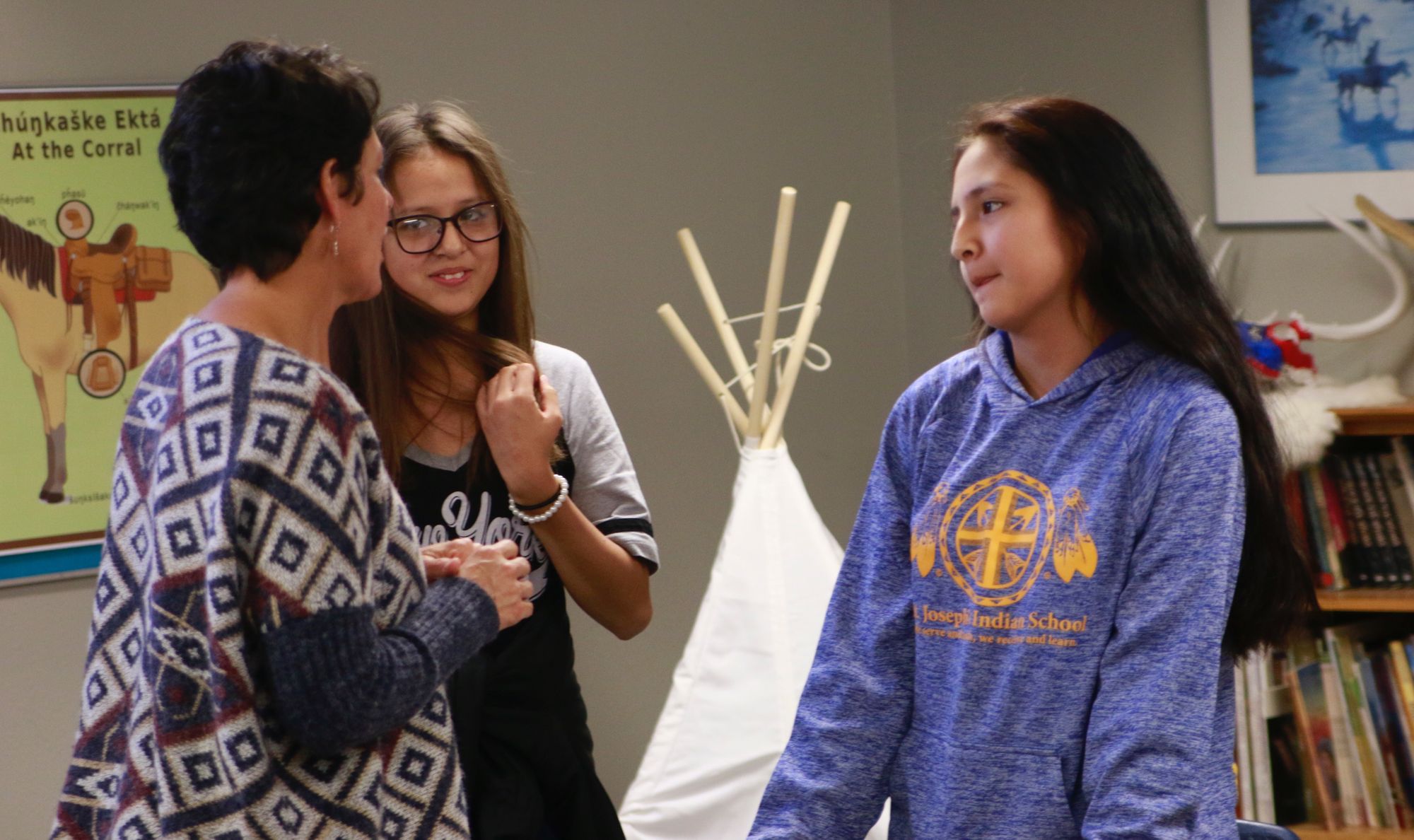
Native American students also tend to be disciplined in South Dakota schools at much higher rates than their peers.
According to the most recent data reported by the federal Civil Rights Data Collection system within the Department of Education, despite Native Americans’ being roughly 10% of South Dakota’s student population, they made up more than 30% of both in-school and out-of-school suspensions as well as roughly 54% of expulsions during the 2015-16 school year, the latest year for which data is available.
Of the 221 violent incidents reported in the state’s schools, 50 involved Native Americans. A total of 127 violent incidents involved white students. There were 123 Native American students arrested in South Dakota public schools, accounting for roughly 45% of the 270 arrests reported in the state’s schools. A total of 109 white students were arrested in schools.
“The discipline data is indicative of the need for more culturally proficient strategies,” Pierce said.
Ultimately, small improvements may help, but many believe that sweeping changes will be needed to the South Dakota public education system before outcomes improve significantly for Native students, Pierce said.
Jones, a former college dean who became state education secretary in January 2019, said he was not sure why it has taken so long to embrace Native American perspectives and input on education. Jones said he was optimistic that with strong input from Native leaders, educators and families, South Dakota can find a way to improve education outcomes for Native American students.
“For many years Native American (education) improvement has been an objective, and there’s been various things tried … it brings to mind a Winston Churchill quote: ‘You can always rely on the United States to do the right thing after they have tried everything else,’” Jones said. “Regarding Native American education, we’ve tried a wide variety of things, and now we’re going to try and listen to them and see how they’d like to approach it.”


